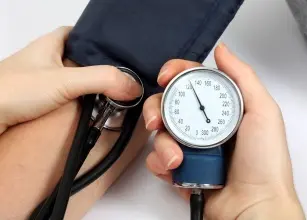Contents

First things first: what is pressure and what does it mean? Simply put, pressure is the force exerted by the flowing blood against the walls of the blood vessels. Measuring blood pressure and its control are very important for our health, so any ‘deviations’ from the norm should be reported to a doctor.
Normal pressure. So what?
Normal blood pressure should be below 120 mmHg systolic and 80 mmHg diastolic. If the measurement of blood pressure shows us more than 140/90 mm Hg, then we are dealing with hypertension. People with diabetes or kidney disease maintain a normal blood pressure of 130/80 mm Hg. People whose measurement showed the upper limit should be checked by a doctor more often.
Pressure level – what does it depend on?
Blood pressure is higher in men than in women. These values level off in women after menopause. In addition, factors such as genetic predisposition, excessive salt consumption, obesity, alcohol abuse, lack of physical exercise, mental state and a diet rich in sodium, potassium or fats have an impact. If we measure blood pressure during the day, the results may vary depending on the time of day – during the day our blood pressure will be higher, at night – lower. The highest rates are in the morning, between 6 and 12.
What do pressure spikes indicate? What is the risk of hypertension?
Significant differences in blood pressure measurement may be a sign of a serious disease, such as coronary artery disease, which is not yet seen on the ECG. High blood pressure may also result in accelerated development of atherosclerosis, increased risk of hemorrhagic or ischemic stroke, myocardial infarction, aortic and peripheral arterial aneurysms. Hypertension can also lead to kidney failure and retinal damage. It is the result of long-term hypertension, which is not treated properly. Changes that occur in the body in this case are often irreversible.
Low Hypertension – Is it Dangerous?
Arterial hypotension is professionally called hypotonia and we deal with it when the measurement shows us up to 100/70 mm Hg in men and 90/60 mm Hg in women. There are no health consequences, but hypotension significantly affects well-being. However, if it leads to fainting, dizziness or spots before the eyes, then you should see a doctor.
Low and high pressure
Keep in mind that if you have low blood pressure, it may increase in the future. With age, the arteries lose their elasticity and the blood begins to flow under greater pressure. Therefore, hypertension can appear later in life, even in people with hypotension.
We lower and raise our blood pressure
Your blood pressure is influenced by your diet and lifestyle. By changing them, we will affect the readings of the blood pressure monitor. Step one – quitting smoking, then you should change your diet avoiding fatty, high-calorie foods and sweets. Instead, start eating vegetables and fruits. With hypertension, it is worth remembering about systematic physical exercise, which will help to effectively lower the pressure. In the case of low blood pressure, to increase it, we can eat a salted tomato or drink 2 glasses of water.









